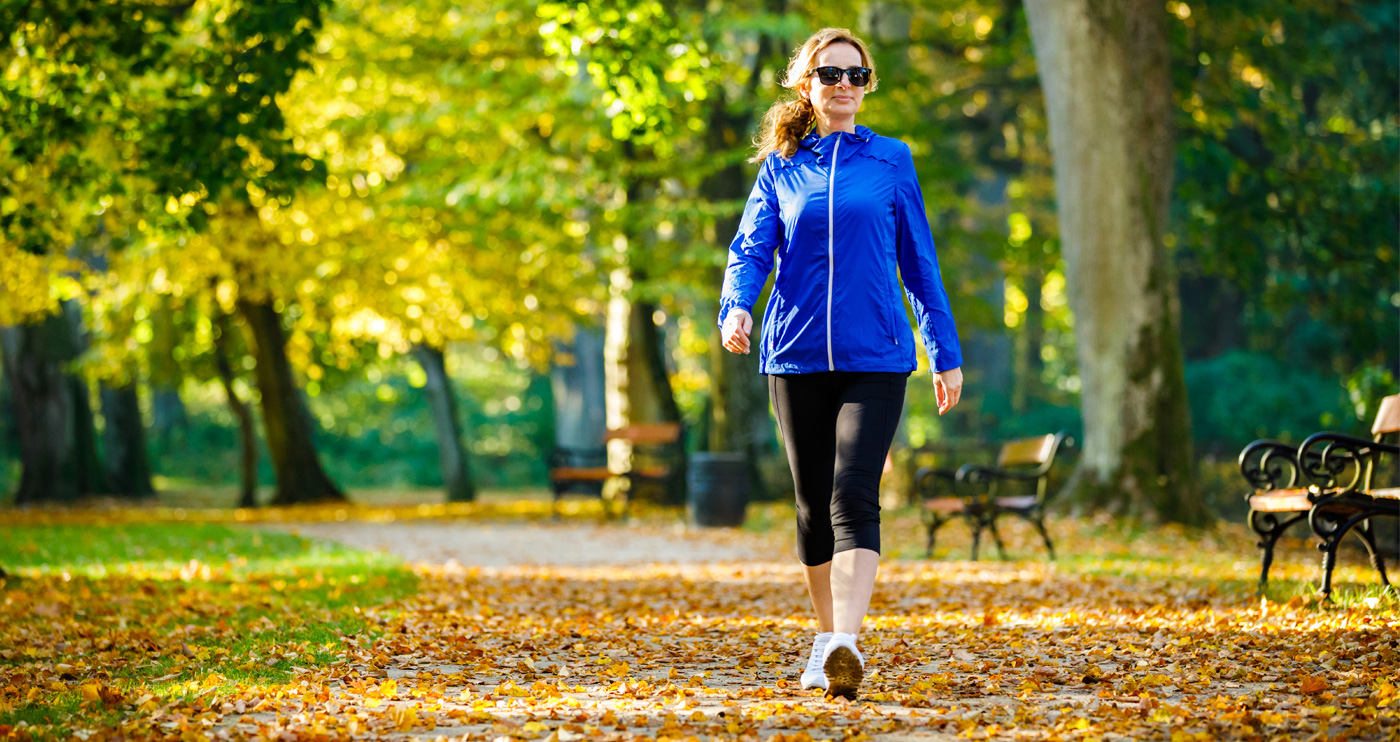
Walking is a great way to start off your weight loss journey. It’s relatively low-impact, so it’s easy on bones and joints, and doesn’t require any specialized gym equipment. While walking might not burn as many calories as higher intensity exercises, there are plenty of ways you can maximize your burn.
1. Walk on natural terrain instead of pavement.
It might not seem like a huge difference, but walking on bare ground does increase the amount of effort your body exerts. Bare ground reacts differently to pressure than pavement does, requiring your muscles to make more adjustments to land, push off, and maintain your balance. Minor variations in natural turf add to this. Believe it or not, walking on flat sand, such as a beach, burns as much as 2.5 times more energy than walking on a sidewalk. If you don’t have a beach right outside your front door, don’t worry — walking on dirt, grass, or gravel still beats pavement.
2. Walk on uneven paths.
Walking up inclines requires more energy than moving horizontally. Not only does your body have to move itself, it’s also working against gravity. Even a gentle incline causes you to engage your quadriceps and gluteal muscles more, increasing your strength while you burn more calories. Try hiking on a natural, unpaved path with some elevation gains.
If hikes in nature aren’t possible for you, vary your routine by climbing the stairs at home or at work. The important thing here is to increase the intensity for your leg muscles, no matter how you do it. You can even do this on a treadmill by playing with the incline settings. Some models may have a pre-set program that will vary the incline for you.
3. Pump your arms.
Walking might seem simple, but many people don’t do it with the correct posture. Keeping your spine upright, your shoulders back, and your arms pumping helps you keep your balance on uneven terrain, gives your lungs room to fully expand, and engages your core. The more you use your upper body, the more calories you’ll burn. If you can walk quickly and pump your arms, you’ll double the calorie burn of a leisurely, slow walk by engaging your arm muscles, pectorals, and upper back.
4. Vary your pace.
The quickest and easiest way to burn more calories while walking is to walk faster. Work interval training into your walking routine by varying your speed — try walking slow for a minute or two, then faster for a minute or two, and repeat. Ideally, your fastest pace should make it slightly difficult to speak full sentences without pausing for breath. If you use a heart rate monitor, shoot for 50-70% of your max heart rate.
The average 150 adult man burns about 100 calories per mile, no matter how fast or slow they move. If he covers that mile in 20 minutes, that’s 5 calories per minute. If he can do it in 10, that’s 10 calories per minute. Increasing your pace, even if it’s only for brief periods, lets you cover more ground. This increases the number of calories you burn on a walk.
5. Use wrist and ankle weights.
Properly fitted wrist and ankle weights force your limbs to do more work, resulting in a higher calorie burn. If your weights fit well and you pump your arms to roughly shoulder height while walking, you can burn up to 20% more calories during your walk. The key here is the fit — if they aren’t, they can shift, pull on joints, or cause chafing. Poorly-fitted weights can do more harm than good, so talk to your doctor or physical therapist about the type, weight, and fit that’s right for you.
Walking is a simple, steady way to increase your cardiovascular endurance and burn some calories. Anything you do to boost the amount of work your muscles need to do — whether that’s walking on more challenging terrain, hiking up hills, increasing your pace, or adding extra weight — will likewise increase the amount of calories your body burns. Using any combination of these tips will help you use more calories and keep you from getting bored with your routine.